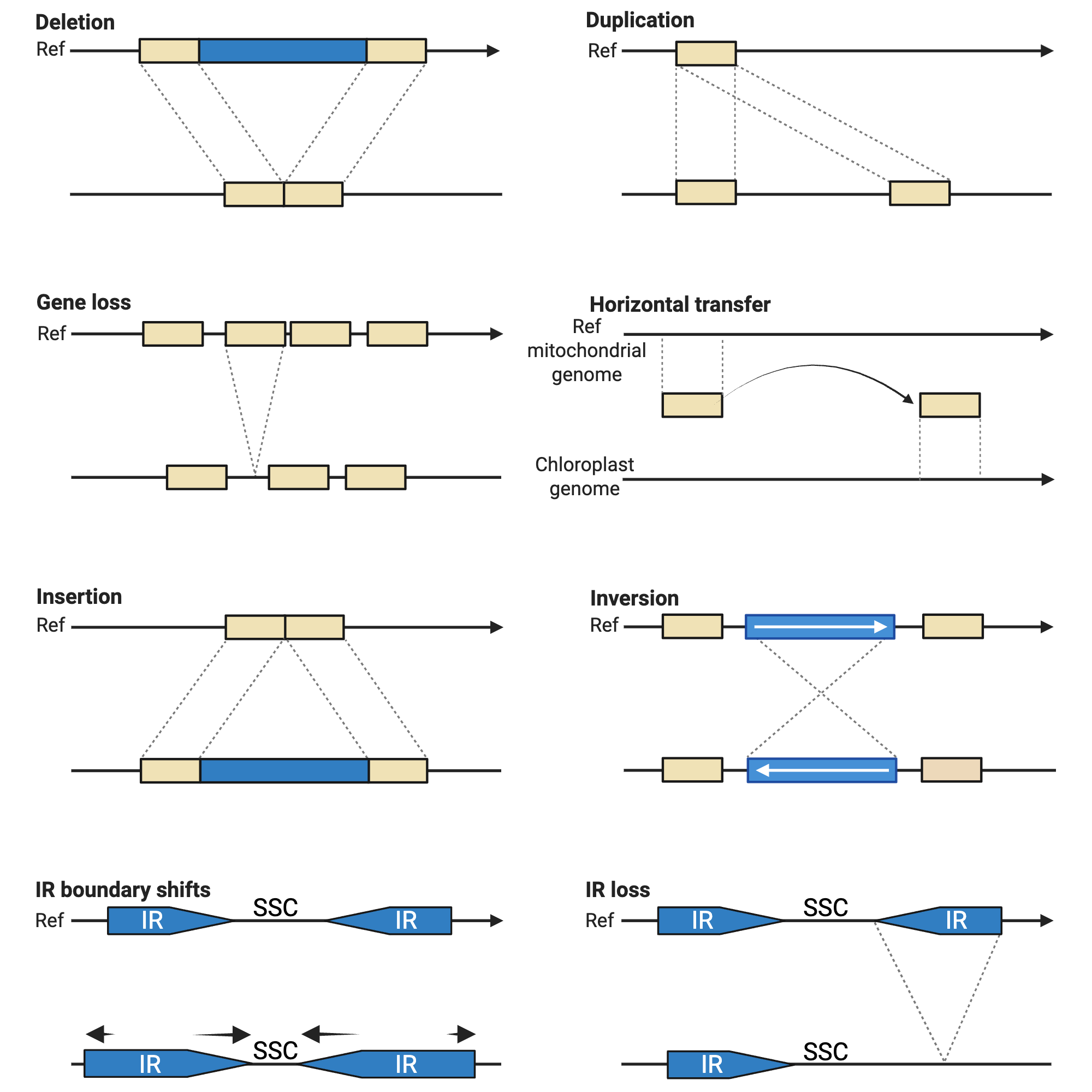


This schem illustrates a representative chloroplast genome in its reference state (Ref) and summarizes key structural modifications. Deletions are represented as missing segments relative to the reference, while duplications appear as repeated sequence blocks. Gene loss is indicated by the absence of specific genes that are normally present in the reference genome. Horizontal gene transfer events are shown by arrows indicating the movement of sequences from the mitochondrial genome to the plastome. Inversions are depicted as segments that have been excised and reinserted in reverse orientation, thereby altering gene order. Insertions are illustrated as additional sequence blocks that disrupt the typical organization. Finally, IR boundary shifts are indicated by arrows outside the boxes, reflecting the sequence expansion at the IR LSC/SSC junctions. The figure was created in BioRender (https://BioRender.com) and is inspired by the conceptual schema from Alkan et al. (2011).